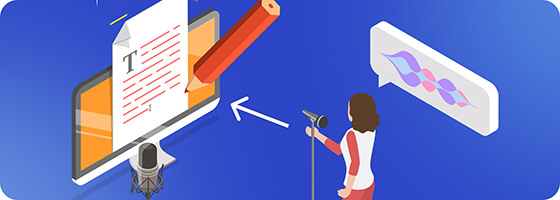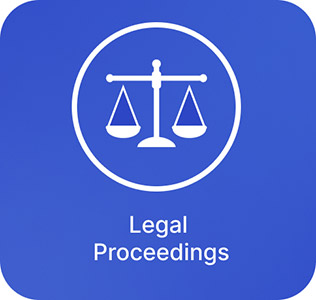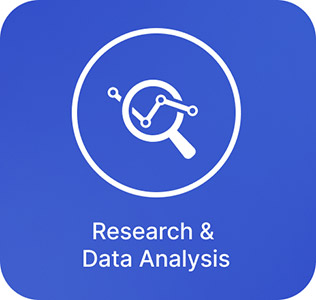Automatic Transcription Guide: Features, Benefits, Use Cases
The Transformative Power of Automatic Transcription Technology
Automatic transcription is a technological marvel that converts spoken language into written text. This rapidly growing technology has the potential to revolutionize the way we consume and create content. It uses speech recognition, artificial intelligence, advanced algorithms, and machine learning to convert audio to text automatically. The technology has significantly evolved; it is now a powerful tool for accessibility, productivity, efficiency and creativity.

The Basics: What is Automatic Transcription?
Automatic transcription is the conversion of audio to text using speech recognition technology. This can be done in real time, such as live captioning, or offline, such as transcribing a podcast episode.
Automatic transcription isn't magic; it’s a product of years of innovation in speech recognition, artificial intelligence (AI), and machine learning. Speech recognition translates audio into text, understanding nuances and variations in language. AI and machine learning algorithms are progressively informed by vast datasets, improving their performance and accuracy over time.
Underlying Tech: The Backbone of Automatic Transcription
The three main technologies that underpin automatic transcription are speech recognition, artificial intelligence, and machine learning.

Speech Recognition
The process of converting spoken words into text. This is done by analyzing the audio signal and identifying the individual phonemes (the smallest units of sound) that make up the words.
Artificial Intelligence (AI)
AI is used to develop and improve speech recognition systems. AI systems can be trained on large datasets of audio and text to learn the patterns of human speech.
Machine Learning
This is the type of AI that allows computers to learn without being explicitly programmed. Machine learning algorithms are used to train speech recognition systems to become more accurate and efficient.
Key Features of Automatic Transcription
Automatic transcription offers multiple key features and many benefits over manual transcription.
Speed
Automatic transcription can be much faster than manual transcription, especially for long audio files. Automatic transcription processes audio files in a fraction of the time. While a human might take hours to manually transcribe a one-hour recording, automatic transcription can do it in minutes.
Language & Dialect Recognition
Automatic transcription systems can recognize a wide range of languages and dialects, breaking language barriers that manual transcribers might face. This makes them ideal for transcribing content from around the world.
Timestamps & Speaker Identification
Automatic transcription systems can generate transcripts with timestamps and speaker identification. This makes it easier to follow along and reference specific parts of the recording. In this way, it’s simple to find specific parts of a transcript and to identify who is speaking.
Integration & Compatibility
Automatic transcription systems can integrate seamlessly with a variety of other software and platforms. facilitating a smooth user experience. This integration makes it easy to use transcripts in your existing workflows.
Custom Vocabulary
Automatic transcription systems can be trained to recognize custom vocabulary. This is useful for tailoring the transcription to better recognize specific phrases, or transcribing content that contains specialized terms or jargon.
In comparison to manual transcription, automatic transcription excels at speed, integration, and compatibility. However, it requires clear audio for optimal performance, while a human transcriber might better understand muffled or accented speech.
The Benefits of Automatic Transcription
In comparison with manual transcription, automatic transcription offers a few advantages:
- Efficient & Time-Saving Automatic transcription significantly reduces the time required to convert audio to text, promoting productivity.
- Cost-Effective It eliminates the need for costly human transcribers, providing a more economical solution.
- Accuracy With advancements in technology, automatic transcription's accuracy is on par with, if not superior to, manual transcription.
- Searchability The resulting text is easily searchable, enhancing content accessibility.
- Better Accessibility It plays a crucial role in making content accessible, aligning with W3C’s Web Content Accessibility Guidelines (WCAG) and advocating for digital equality.
- Less Efficient, More Time-Consuming
Manual transcription is a painstaking, hands-on, labor-intensive process. Transcribing a one-hour audio file can take several hours, depending on the transcriber's speed and accuracy. - High-Budget Item
Manual transcription can be expensive, especially for large volumes of audio. Transcription rates can vary depending on the transcriber's experience and the complexity of the audio, but they can range from $0.50 to $5.00 per minute of audio. - Sometimes Inaccurate
Manual transcription is prone to errors, especially for long or complex audio files. Transcribers are human, and they make mistakes. Common errors include typos, misspellings, and omissions. - Unsorted Information
It may be difficult to find specific information in a manually transcribed file, as they are not indexed. - Accessibility Concerns
People who are deaf or hard of hearing need transcripts to access audio content. However, manual transcriptions may in certain cases be less accessible.
Primary Use Cases for Automatic Transcription
Automatic transcription is used across many domains, revolutionizing how we interact with content.
Graphic Suggestion: A unique version of each icon should be provided

Journalism & Interviews
Interviews, press conferences, and other journalistic content can be automatically transcribed. This saves a lot of time and effort, and makes it easier to publish transcripts online or in print.

Education
In educational settings, talks, lectures, and webinars can be transcribed automatically, creating accessible material for all students, and references for students and educators to review later.

Business Meetings
Auto transcribe tools document meetings, conference calls, and other communication. This helps businesses keep track of and record meetings, and share information with team members who were unable to attend.

Legal Proceedings
Automatic transcription of depositions, court cases, and other legal events helps keep precisely accurate records, and helps lawyers and judges track proceedings.

Content Creation
Creators use automatic video transcription for podcasts, videos, and other content, enhancing accessibility and providing a publishable text version of their content.

Research & Data Analysis
Automatic transcription of research interviews, focus groups, and other qualitative data can help researchers analyze data more efficiently, and identify key themes and patterns.
Choosing a Transcription Tool: What to Consider
When choosing an automatic transcription tool provider, here are a few key factors to keep in mind:
- Accuracy
Accuracy is the most important factor to consider when choosing an automatic transcription tool provider. Make sure to choose one that offers high accuracy rates for the types of audio you need to transcribe. - Speed
If you need your transcripts quickly, make sure to choose a provider that offers fast turnaround times. Some providers can deliver transcripts within hours or even minutes of uploading your audio. - Pricing
Transcription prices can vary depending on the provider, the length and complexity of your audio, and the turnaround time you need. Compare prices from different providers before you choose one. - Security
If you need to transcribe confidential audio, choose a provider that offers robust security measures. This includes measures such as data encryption and non-disclosure agreements with their transcribers. - User Experience
Choose a provider that offers an easy-to-use platform for uploading your audio and downloading your transcripts. Some providers also offer additional features such as editing tools and integrations with other software platforms.
How to Evaluate Transcription Providers
Once you have considered the factors we’ve listed above, you can start to evaluate different automatic transcription tool providers. Here are a few things to look for:
- Customer Reviews
Read online reviews to see what other customers have said about the provider's accuracy, speed, pricing, security, and user experience. - Free Trials
Many transcription providers offer free trials so that you can try their service before you commit to a paid plan. This is a great way to test for accuracy and speed, and to see if the platform is easy to use. - Guarantee
Some transcription providers offer a guarantee on their accuracy. This means that they will revise your transcript for free if you are not satisfied with the accuracy.
Moving Forward With Automatic Transcription
Automatic transcription can play a role in helping us to achieve our human aspirations of equality and the hope for a better future. By making audio content more accessible to everyone, automatic transcription can help to create a more inclusive and equitable world.
For example, automatic transcription can be used to create accessible versions of educational materials and workplace communications. This can help give everyone equal access to information and opportunities. Additionally, automatic transcription can be used to transcribe research interviews and focus groups. This can help researchers to better understand the experiences of people from all backgrounds, so they can develop solutions that better address everyone’s needs.
Let’s use this powerful tool and all its potential to make the world a better place for everyone.
FAQs
How does automatic transcription differ from manual transcription?
Automatic transcription uses AI, machine learning, and speech recognition technologies to swiftly convert spoken language into written text. In contrast, manual transcription involves a human transcriber listening to an audio file and typing out the content, which can be time-consuming.
How accurate is automatic audio transcription?
The accuracy of automatic audio transcription has significantly improved thanks to advancements in AI and machine learning. While it may still struggle with heavily accented speech or background noise, its performance is comparable to, if not better than, manual transcription in optimal conditions.
How does automatic transcription promote accessibility?
Automatic transcription enhances content accessibility by converting audio and video content into text. This is vital for individuals with hearing impairments, aligning with accessibility standards like WCAG and fostering digital equality.
Are there any security concerns with using automatic transcription?
While automatic transcription services generally adhere to strict security standards, it is crucial to verify that your chosen provider employs robust security measures to protect your data and maintain confidentiality.
Can automatic transcription handle audio with multiple speakers?
Yes, automatic transcription can identify different speakers in an audio file, providing timestamps and speaker labels. This feature is particularly useful for transcribing interviews, meetings, and discussions with multiple participants.
What are some of the limitations of automatic transcription?
Automatic transcription is still a relatively new technology, and it is not perfect. Some of the limitations of automatic transcription can include:
Accuracy: Accuracy can vary depending on the quality of the audio, the speaker's accent, and the presence of background noise.
Speaker identification: Speaker identification can be challenging, especially in multi-speaker audio.
Timestamps: Timestamps can be inaccurate, especially for fast-paced audio.
Custom vocabulary: Automatic transcription systems may not be able to recognize custom vocabulary.









